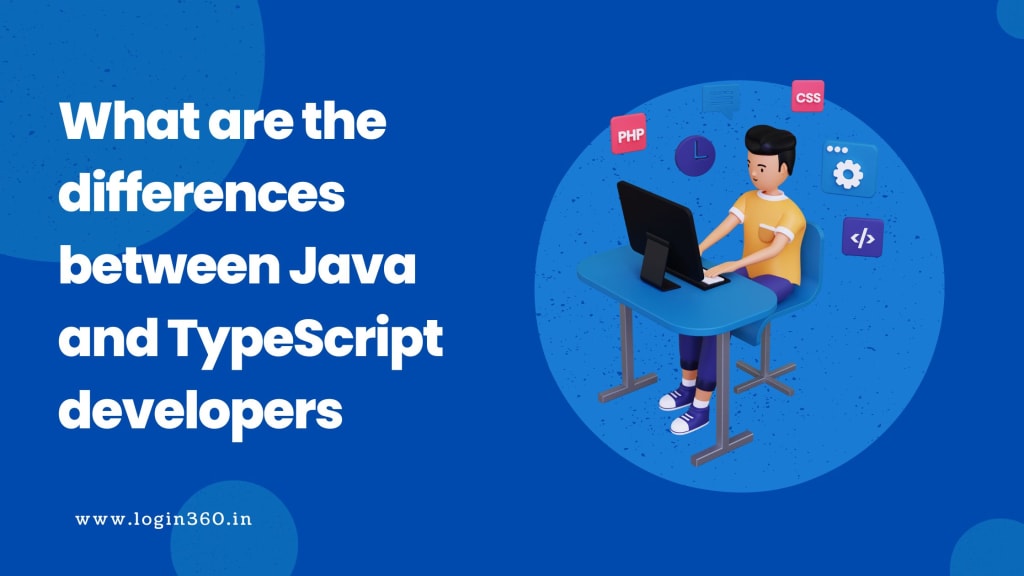
Java and TypeScript developers
TypeScript is becoming a popular programming language for both front-end and back-end developers.
TypeScript allows developers to fully utilize the power of object-oriented programming principles and practices (OOP). Meanwhile, they can build on their knowledge of JavaScript, from which TypeScript is derived.
TypeScript is a great choice for Java programmers who want to branch out into another language while improving their OOP expertise.
Here are the five most important things every Java developer should learn about TypeScript:
- TypeScript is object-oriented just like Java.
- There are some syntactic differences between TypeScript and Java.
- TypeScript and Java are compiled in different ways.
- NPM is a NodeJS TypeScript component library.
- You need to find a suitable TypeScript IDE.
TypeScript is object-oriented just like Java.
The typeScript was designed as an OOP language from the beginning. TypeScript supports all the standard OOP features found in Java.
TypeScript is, first and foremost, a strictly typed language. Like Java, TypeScript determines the type of a variable at the design time when the variable is declared. The following is an example of a TypeScript strict type declaration, which declares the firstName variable as a string variable:
let first name: string;
Classes and interfaces are the first-class building blocks in TypeScript, as they are in Java.
- The scope of class variables and methods can be declared public, protected, or private. Java has always supported this scoping style.
- Finally, you can use decorators on classes, methods, accessors, properties, and parameters in TypeScript.
There are some syntactic differences between TypeScript and Java.
Both TypeScript and Java are OOP languages, but their syntax is different. In Java, the following example declares a variable called the first name:
String firstName = "james";
The following TypeScript example declares the first name:
const firstName: string = James;
As you can see, all the examples above have the same goal: declare a variable named firstName of type String and assign it the value "John". The syntax of each expression is different.
A TypeScript package is not the same as a Java package.
Both Java and TypeScript have compiled languages. This means that a compiler checks the syntax of source code before converting it into a format that a computer runtime can process.
Source code in Java is compiled into bytecode, which is executed by the Java Virtual Machine installed on a given computer.
- TypeScript compiles source code into JavaScript code, which is executed by the JavaScript runtime. A JavaScript runtime is a component of a web browser for front-end developers.
- A JavaScript runtime is installed on the server that hosts the back-end application for back-end developers.
- In Java, the physical file transformation converts a text file with the.java file extension into bytecode with the .class file extension.
- Typescript, on the other hand, converts source code text files with the.ts extension into JavaScript code with the.js extension.
NPM is a NodeJS component library for TypeScript.
Over the years, Java programming has matured to the point where programmers have developed a comprehensive set of packages and frameworks for using components and libraries that are easy to use in their code.
Maven and Gradle are two popular package management and build systems for Java developers.
- These package management systems are supported by various repositories that provide components for download and installation.
- TypeScript developers use the NPM package management and development system to build NodeJS-compatible applications. Freely available NPM packages are hosted at npmjs.com.
Use a good IDE for TypeScript just like Java.
Any Java or TypeScript developer needs a simple text editor to create an application. On the other hand, most developers use an integrated development environment (IDE) such as IntelliJ, WebStorm, Eclipse, or Visual Studio Code.
- The advantage of using an IDE is that developers can write better code faster. Syntax errors in code are detected by IDEs before the code is compiled. Many IDEs can detect inefficient code and suggest better ways to write it.
- Many IDEs have a feature called code completion, which suggests ways for developers to complete programming statements as they write them.
- You can also import autocomplete dependency statements when you declare a class or interface that is part of an external dependency.
This code completion feature is known by different names in different IDEs. This is called IntelliSense and IntelliCode in Microsoft Visual Studio Code. Content Help is a setting in Eclipse, while code completion is a setting in IntelliJ and Webstorm.
Java and TypeScript work together
Java developers can benefit greatly from TypeScript. Coders who understand the complexities of object-oriented programming can immediately apply what they know to TypeScript.
- TypeScript also provides a path for Java developers to enter the world of browser-based software development.
- Moving from Java to TypeScript has a learning curve for developers. For the most part, learning TypeScript is about understanding the syntax. The five suggestions in this article should make the transition easier.





Comments
There are no comments for this story
Be the first to respond and start the conversation.